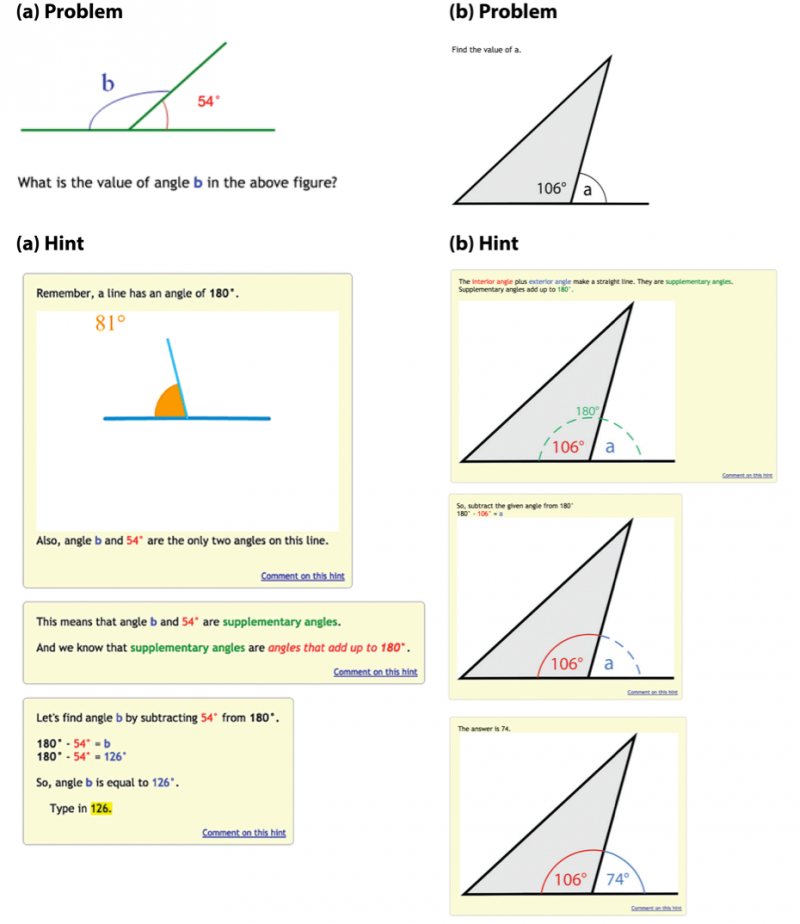Difference between revisions of "Consistent Language"
Pinventado (talk | contribs) (Updated author name) |
Pinventado (talk | contribs) (Added link to author page) |
||
| Line 4: | Line 4: | ||
{{Infobox_designpattern | {{Infobox_designpattern | ||
|image= Consistent_language.png | |image= Consistent_language.png | ||
|contributor= [[Paul Salvador Inventado]], Peter Scupelli | |contributor= [[Paul Salvador Inventado]], [[Peter Scupelli]] | ||
|source= Inventado and Scupelli (in press 2015)<ref name="Inventadoip">Inventado, P.S. & Scupelli, P. (in press 2015). A Data-driven Methodology for Producing Online Learning System Design Patterns. In Proceedings of the 22nd Conference on Pattern Languages of Programs (PLoP 2015).</ref> | |source= Inventado and Scupelli (in press 2015)<ref name="Inventadoip">Inventado, P.S. & Scupelli, P. (in press 2015). A Data-driven Methodology for Producing Online Learning System Design Patterns. In Proceedings of the 22nd Conference on Pattern Languages of Programs (PLoP 2015).</ref> | ||
|dataanalysis= [[Analysis:Student_affect_and_interaction_behavior_in_ASSISTments#language |Student affect and interaction behavior in ASSISTments]] | |dataanalysis= [[Analysis:Student_affect_and_interaction_behavior_in_ASSISTments#language |Student affect and interaction behavior in ASSISTments]] | ||
Revision as of 09:10, 14 March 2017
| Consistent Language | |
| Contributors | Paul Salvador Inventado, Peter Scupelli |
|---|---|
| Last modification | March 14, 2017 |
| Source | Inventado and Scupelli (in press 2015)[1] |
| Pattern formats | OPR Alexandrian |
| Usability | |
| Learning domain | General |
| Stakeholders | Teachers Students |
| Production | |
| Data analysis | Student affect and interaction behavior in ASSISTments |
| Confidence | |
| Evaluation | PLoP 2015 shepherding and writing workshop Talk:ASSISTments |
| Application | ASSISTments |
| Applied evaluation | ASSISTments |
Use terms, images, notations, and other problem elements consistently throughout the learning activity[1].
Context
Students are asked to answer problem-solving activities on an online learning system to practice a skill. They are practicing problems with the Try It Yourself design pattern. The system also provides students with support through feedback such as Differentiated Feedback, Worked Examples, and others.
Problem
Students are easily confused when terms, figures, or other elements of the problem or hint are used inconsistently.
Forces
- Working memory. Working memory can only hold a limited amount of information. Adding extraneous information unnecessarily increases cognitive load required to store information[2]. For example, using the × and • symbols interchangeably to indicate multiplication will require students to remember both symbols[3].
- Split-attention effect. Unnecessary processing of information adds cognitive load that interferes with learning[2]. For example, two different figures are used in the problem statement and in the hint, but they mean the same thing. This requires the student to compare and contrast the figures before using them to make inferences.
- Limited resources. Student attention and patience is a limited resource[4][5]. Students may give up if they are overwhelmed by too many extraneous tasks they need to manage while learning.
Solution
Therefore, use the same language throughout the problem. The term language is used broadly to include different elements of the problem such as term usage, text formatting, color usage, notations, visual representations, and so forth.
Consequences
Benefits
- Students need to keep track of less information in working memory.
- Students do not need to spend unnecessary effort to discover the relationship between different representations used in the problem.
- Straightforward tasks are easier to manage and are less likely to cause students to feel overwhelmed.
Liabilities
- There are some cases when inconsistent problem elements are needed to introduce desirable difficulty[6]. For example, using a different figure in a Worked Examples.
- Students may not learn other representations if they are exposed to the same ones every time.
- It is more difficult to reuse existing content because it needs to be modified to ensure that it uses a language consistent to the problem.
Evidence
Literature
Peterson and Peterson[7] found that unfamiliar combinations of letters could only be held in memory for a few seconds. In a different study, Miller[8] indicated that working memory could only hold five to nine chunks of unfamiliar information at a time. Learners are more likely to perform better when working memory is not overloaded by unnecessary information[2].
Discussion
Shepherds, writing workshop participants, and learning system stakeholders (i.e., data mining experts, learning scientists, and educators) agreed that the problem recurs in online learning systems and the solution could properly address the problem.
Data
According to an ASSISTments math online learning system data, frustration correlated with problems that used its elements inconsistently. For example, a math problem dealing with angles used the degree notation inconsistently – “Subtract the given angle from 180°. 180 - 47 = 133.”
Example
Most online learning systems adhere to instructional designs, specifically using a Consistent Language. Three notable online learning systems, which were also reported to lead to significantly better student learning, are Cognitive Tutor Algebra[9], Cognitive Tutor Geometry [10] and ASSISTments[11].
Figure (a) shows an example of a problem and its corresponding hints with an inconsistent language. The hint uses a different figure, orientation, and color to represent the angle. Students will need to analyze the hint and relate it to the problem before it can be used to make inferences. Figure (b) shows an example of a problem and its corresponding hints that uses a consistent figure. It will probably take students less time to process, understand, and utilize these hints to make inferences.
Related patterns
Use the Familiar Language design pattern when selecting the representation for creating a Consistent Language to facilitate understanding . It is good practice to use a Consistent Language to develop any type of content in an online learning system.
References
- ↑ 1.0 1.1 Inventado, P.S. & Scupelli, P. (in press 2015). A Data-driven Methodology for Producing Online Learning System Design Patterns. In Proceedings of the 22nd Conference on Pattern Languages of Programs (PLoP 2015).
- ↑ 2.0 2.1 2.2 Sweller, J. (2004). Instructional design consequences of an analogy between evolution by natural selection and human cognitive architecture. Instructional science, 32(1-2), 9-31.
- ↑ Polya, G. (2014). How to Solve It: A New Aspect of Mathematical Method: A New Aspect of Mathematical Method. Princeton university press.
- ↑ Arnold, A., Scheines, R., Beck, J.E., and Jerome, B. (2005). Time and attention: Students, sessions, and tasks. In Proceedings of the AAAI 2005 Workshop Educational Data Mining (pp. 62-66).
- ↑ Bloom, B.S. (1974). Time and learning. American psychologist, 29(9), 682.
- ↑ Bjork, R.A. (1994). Memory and metamemory considerations in the training of human beings. In J. Metcalfe and A. Shimamura (Eds.), Metacognition: Knowing about knowing. (pp.185-205). Cambridge, MA: MIT Press.
- ↑ Peterson, L. and Peterson, M. (1959). Short-term retention of individual verbal items. Journal of Experimental Psychology 58: 193–198.
- ↑ Miller, G.A. (1956). The magical number seven, plus or minus two: Some limits on our capacity for processing information. Psychological Review 63: 81–97.
- ↑ Koedinger, K. R., and Aleven, V. (2007). Exploring the assistance dilemma in experiments with cognitive tutors. Educational Psychology Review, 19(3), 239-264.
- ↑ Aleven, V., Mclaren, B., Roll, I., and Koedinger, K. (2006). Toward meta-cognitive tutoring: A model of help seeking with a Cognitive Tutor. International Journal of Artificial Intelligence in Education, 16(2), 101-128.
- ↑ Heffernan, N.T. and Heffernan, C.L. (2014). The ASSISTments Ecosystem: Building a Platform that Brings Scientists and Teachers Together for Minimally Invasive Research on Human Learning and Teaching. International Journal of Artificial Intelligence in Education 24, 4 (2014), 470-497.

